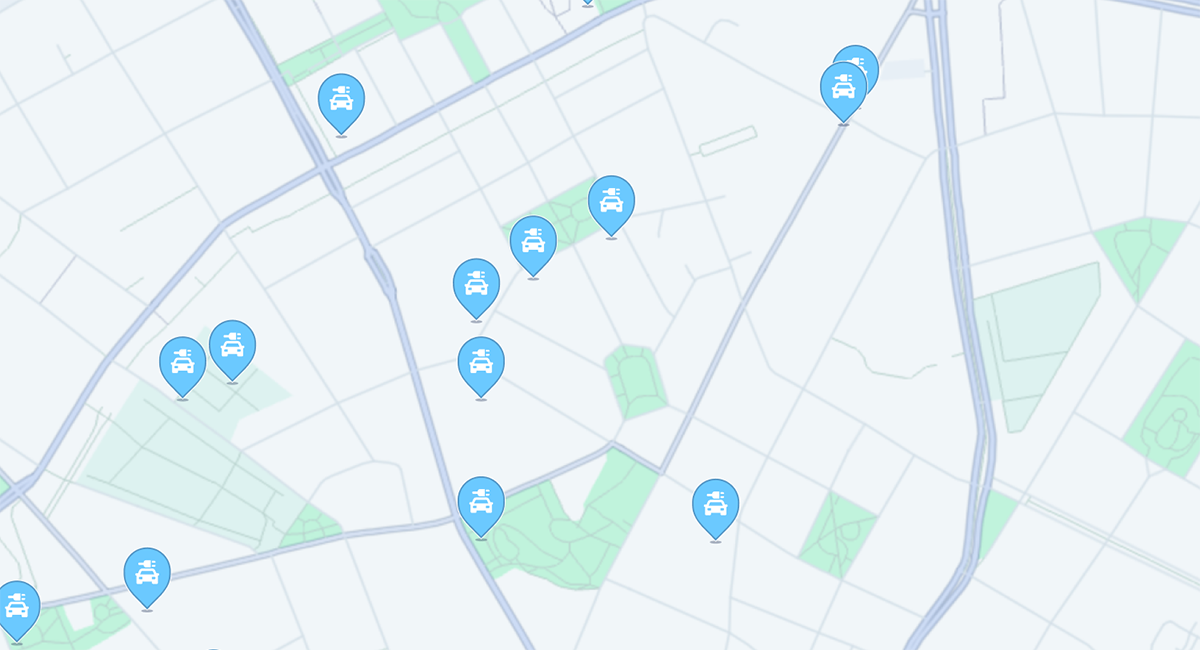Today, there are a large number of different navigation tools to help individuals and businesses get around – and there’s a much larger pool of data underpinning them all. In our last article, Maximising the value of Point-of-Interest (POI) Datasets, we explored what POI data is, a few use cases, and why HERE’s database of POI data offers some advantages compared with those used by other solution providers.
To gain access to these advantages, developers need to have an awareness of how to migrate from Google Places to HERE places. Fortunately, this isn’t particularly difficult – and we’ll show you exactly how to do it below:
Why the time is right to migrate from Google Places
Although Google Places certainly provides access to a huge amount of data for developers to use when building their applications, it is not necessarily the best option. The Google Places API can be expensive, lack certain kinds of data, and be restrictive in terms of the returns it generates from search queries.
Let’s look at cost first. Google’s place search is split across three different APIs – Find Place, Nearby Search, and Text Search. Following the user input, Find Place offers a few free fields but is fairly limited. The other two APIs, Nearby Search and Text Search, meanwhile, return more information but can incur higher fees above the regular API cost. On the other hand, HERE does not charge for particular fields of data in our results, only charging based on the use of the API itself.
HERE Places boasts a dataset covering more than 120 million places across 196 countries, grouped into over 400 categories. This robust dataset is just one of the many reasons why HERE has retained its position as the number one ranked location platform, according to Counterpoint Research. Announcing the latest ranking, Counterpoint praised HERE’s “privacy-centric offering” – another key differentiator between the platform and its rivals.
While Google ultimately owns any data the users upload to its servers, with HERE Places API that’s not the case. All user data is owned and controlled by the individual. It is never used without their consent. What’s more, incorporating HERE’s data within your app is straightforward. Keep reading to see how easy it is to migrate from Google Places API to HERE Places API.
The migration process explained
Let’s imagine that your app user is searching for places using the term “vegan.” In response to this search term, HERE Places uses two separate search APIs. The Discover API is used for free-form text searching where results are ranked by how well they match the search term. While the Browse API is better suited for finding results within particular categories. For this example, the Discover API makes the most sense.
In terms of the data returned by both the HERE Places API and Google Places API, there are a few differences to be aware of. For instance, Google Places does not return a human-readable address, while HERE returns it as the address property. Google also does not return any contact information, whereas HERE returns multiple forms of contact (where available). There are also several differences in terminology to consider.
With regard to the implementation of a category filter, migrating from Google Places API is also straightforward. In the HERE Places API, you first need to find the category ID you want to use by looking through HERE’s extensive list of categories. In this case, vegan food has the category ID “800-076”.
Accessing our migration support
If you need further assistance to migrate from Google Places API to HERE Places API, then there is plenty of support to be found, including extensive documentation on HERE APIs. There’s also a large developer community ready to assist with any queries.
A few years ago, HERE updated its Places API, revamping its autosuggest, Discover, and Browse APIs. It is now rightly regarded as one of the foremost alternatives to Google Places API. Don’t simply stick with Google Places API because that’s what your developers have always used.
Your costs for using Google Places API can quickly add up if you require access to more detailed search results. What’s more, the returns you receive from a particular search term are not always as reliable as you might think. The POI data accessed by the HERE Places API is continuously updated to ensure that your returns are as accurate as possible.
Search is fundamental to so many software applications. It isn’t just used by mapping tools but is essential for comparison sites, restaurant review platforms and any number of other applications. In a competitive app development space, it is hugely important that developers have access to an API that delivers returns that users can depend on. That’s what HERE Places API provides.
Local Eyes B.V. is a leading reseller and integrator of geospatial technologies and data that has been contributing to its client’s success for the past 10 years by optimizing their decision-making and logistic processes. If you’re interested in learning more about how Local Eyes can provide Point-of-Interest data, get in touch today.





